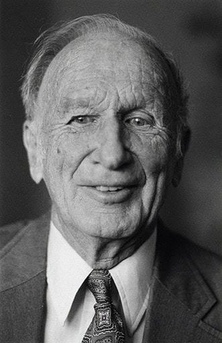Edward Lorenz, father of chaos theory, dies
(Agencies)
Updated: 2008-04-18 09:04
Updated: 2008-04-18 09:04
NEW YORK -- Edward Lorenz, a meteorologist who became the father of the modern field of chaos theory, died Wednesday of cancer in Massachusetts aged 90, MIT announced Thursday.
A professor at the Massachusetts Institute of Technology (MIT), Lorenz was the first to identify chaotic behavior in the mathematical modeling of weather systems, in which small differences in a dynamic system, like the weather, "could trigger vast and often unsuspected results," the university said.
A committee that awarded him the 1991 Kyoto prize for basic sciences wrote that Lorenz's groundbreaking theory represented "one of the most dramatic changes in mankind's view of nature since Sir Isaac Newton."
|
|
Lorenz's research led him to develop what became known as the "butterfly effect," the idea that an infinitesimally small alteration -- like the flapping of an insect's wings -- can lead to potentially monumental consequences.
The term stemmed from his 1972 academic paper "Predictability: Does the Flap of a Butterfly's Wings in Brazil Set off a Tornado in Texas?"
MIT said Lorenz's early work "marked the beginning of a new field of study that impacted not just the field of mathematics but virtually every branch of science -- biological, physical and social."
"Some scientists have since asserted that the 20th century will be remembered for three scientific revolutions -- relativity, quantum mechanics and chaos," the statement said.
The original experiment that lead to Lorenz's groundbreaking theory was conducted in 1961, when he was using a numerical computer model to rerun a weather prediction.
When, as a shortcut on a number in the sequence, he entered the decimal .506 instead of entering the full .506127, the result was a completely different weather scenario.
Lorenz published his findings in a 1963 paper for the New York Academy of Sciences noting that "if the theory were correct, one flap of a seagull's wings could change the course of weather forever."
Later speeches and papers by Lorenz replaced the seagull with the more poetic butterfly.
Lorenz was working as a weather forecaster for the US Army Air Corps during World War II when he decided to pursue further study in meteorology.
But he wrote once that his interests in things mathematical and meteorological dated back much earlier, to his childhood.
"As a boy, I was always interested in doing things with numbers, and was also fascinated by changes in the weather," Lorenz once wrote in an autobiographical sketch.
His daughter told the New York Times that Lorenz was active in his field to the end of his life, in addition to also being vigorous and fit.
"He was out hiking two and one-half weeks ago, Cheryl Lorenz told the daily, "and he finished a paper a week ago with a colleague."
|
||
|
||
|
|
|
|
